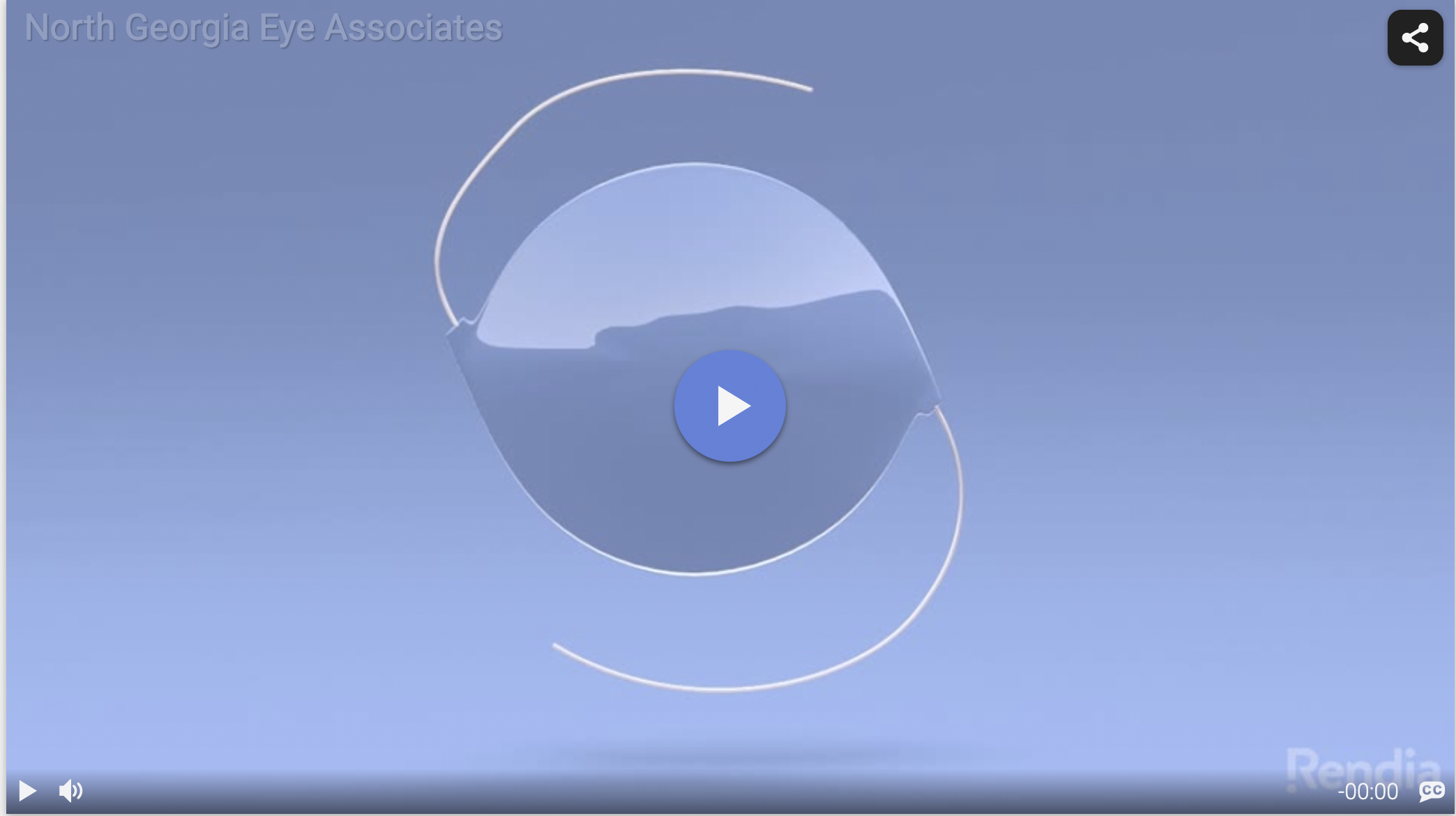Freedom IOLs

What is an IOL?
If it’s time to undergo cataract surgery, you have a few major decisions to make. The most critical choice you face is the IOL you select for your procedure.
Intraocular lenses, or IOLs, replace your natural lens during cataract surgery. They focus light, which your natural lens could no longer do. North Georgia Eye Associates has a complete offering of standard and freedom IOLs. We can get you the ideal IOL for your lifestyle and vision goals.
IOLs, or intraocular lenses, refer to the replacement lenses used during cataract surgery. Cataracts form on the eye’s natural lens as proteins break down and clump together.
As they gather together, they turn your lens cloudy and white. Cataracts can get so thick they block light from flowing to your retina. At this point, they impair your vision, making cataract surgery necessary. Cataract surgery removes and replaces your natural lens with an IOL.
IOLs focus that light directly onto your retina, producing clear, crisp vision. The IOL you select determines the versatility of your eyesight after cataract surgery.
Introducing the Revolutionary Light Adjustable Lens
Light Adjustable Lenses: Overview
Freedom IOLs
There are a wide range of Freedom IOLs to choose from. Some may reduce your dependency on glasses after cataract surgery.
These advanced lenses are designed to provide clear vision at multiple distances or focal points, giving you more visual freedom in your daily life.
Introducing the Revolutionary Light Adjustable Lens
The Light Adjustable Lens, also called LAL, is a new type of intraocular lens that can have its focusing power adjusted after cataract surgery. Unlike traditional monofocal and multifocal IOLs, which have a fixed power, the LAL contains a light-sensitive material that allows your eye doctor to fine-tune your vision after you’ve recovered from cataract surgery.
The PanOptix Trifocal IOL
The PanOptix trifocal IOL is the first-ever trifocal IOL available. Most freedom IOLs have two focal points built into the lens.
These focal points are in the material of the IOL as rings. The PanOptix trifocal has three of these rings or focal points.
As light enters your eye, the PanOptix trifocal can focus it, no matter where it comes from. The three focal points in the lens give you a full range of vision from near, far, and between.
If you want visual freedom after cataract surgery, the PanOptix trifocal IOL may give it to you. you may need glasses for fine tuning vision (especially for fine print) but in general, you can look forward to significantly reduced dependency on visual aids after cataract surgery.
The Vivity IOL
The Vivity IOL is the first and only non-diffractive extended depth of focus (EDOF) IOL. It has longer focal points than traditional freedom IOLs and does not split the light entering your eye.
The extended focal point gives you a more comprehensive range of continuous vision. In addition, the non-diffractive X-WAVE technology used in the Vivity IOL gives you disturbance-free sight.
Most freedom IOLs have rings built into the lens. These rings have focusing power to give you clear vision at one focal point.
But, the focal points in freedom IOLs split the light that enters your eye. The result is that there are minor but noticeable gaps in your vision when transitioning between focal points.
The X-WAVE technology stretches and shifts light instead of splitting it. Because light is stretched instead of split, you’ll have a full range of clear vision without disturbances. The Vivity IOL can also significantly reduce or end your need for glasses.
Toric Model IOLs
If you have astigmatism, you can correct it during cataract surgery. Toric model IOLs compensate for the shape of your cornea that causes astigmatism.
Most freedom IOLs have toric models available. That means you can get the exceptional vision provided by the IOL and end your astigmatism simultaneously.
Monofocal IOLs
Monofocal or standard IOLs are the most basic type of IOL. They provide superb vision at one distance.
The downside of a monofocal IOL is that they only give you clear vision at one distance. You will still need glasses for other distances not corrected by the IOL.
Most people correct their distance vision with a monofocal IOL. That means you still need glasses for up-close tasks like reading.
If you don’t mind using reading glasses, a monofocal IOL may be a good fit. If you prefer not to depend on reading glasses, a freedom IOL is a better choice.


